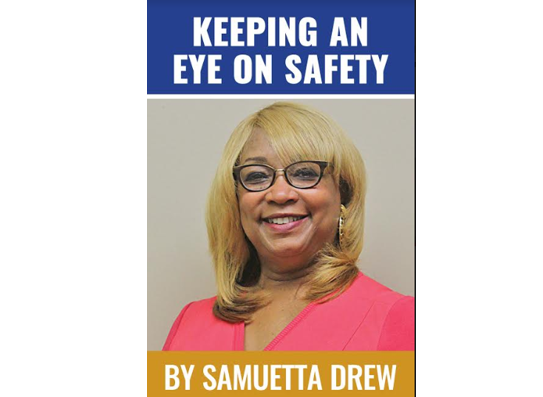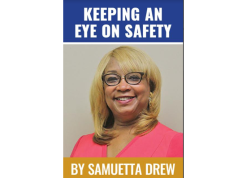By Samuetta Hill Drew
Believe it or not, summer vacationing is coming to a close soon for thousands around the country. We have explored safety tips for summer travels domestically and abroad with articles dedicated to traveling with seniors and toddlers. We discussed vacationing at the beach, as well as backyard pool safety. Now it is time to shift our safety focus from relaxation and leisure to a more serious matter, returning to school. This new “Back to School” series will review various safety areas as school buses’ engines begin to start up.
This week we will explore some basic safety measures and focus on one that is especially critical in our current weekly heat advisory because of prolonged extreme temperatures. These basic safety tips for the opening of schools will reach across the age spectrum.
Back to School Safety Tips:
- Sunscreen, hat, sunglasses, long sleeves and pants. Remember anyone can get sunburn, regardless of your skin color.
- Insect repellent to protect from mosquito bites. Do not use products containing oil of lemon eucalyptus (OLE) or para-menthane-diol (PMD) on children under 3 years old.
- Do not apply insect repellent to a child’s hands, eyes, mouth, cuts, or irritated skin. Adults can spray insect repellent onto their hands and then apply it to a child’s face. Remember to always follow the product label instructions. Do not apply repellent on the skin under clothing. When using sunscreen, apply sunscreen first and insect repellent second.
- Use reusable water bottles to stay hydrated. Avoid sugary drinks.
It is very important that adults and children of all ages stay hydrated during this time of extreme heat. During the period between 2015-2018 a study was conducted about plain water consumption in the U.S. It showed that plain water consumption varies by age, race/ethnicity, and socioeconomic status. The study showed that U.S. children and adolescents drank an average of 23 ounces of plain water daily and U.S. adults drank an average of 44 ounces.
The study findings revealed that among U.S. children and adolescents, plain water intake is significantly lower in younger children, non-Hispanic Black children or Hispanic children (compared to non-Hispanic white children), those living in lower-income households, youth whose head of household had less than a high school education (compared to college or higher).
This plain water intake information is important because as students go back to school by walking, riding their bikes, playing or exercising outdoors, they all need to stay hydrated. Therefore, schools that service students with poor plain water consumption rate should pay closer attention and try to ensure all students, but especially these students, stay hydrated.
Keeping an Eye on Safety is actually everyone’s responsibility, especially parents and educators as school bells begin to ring again.





